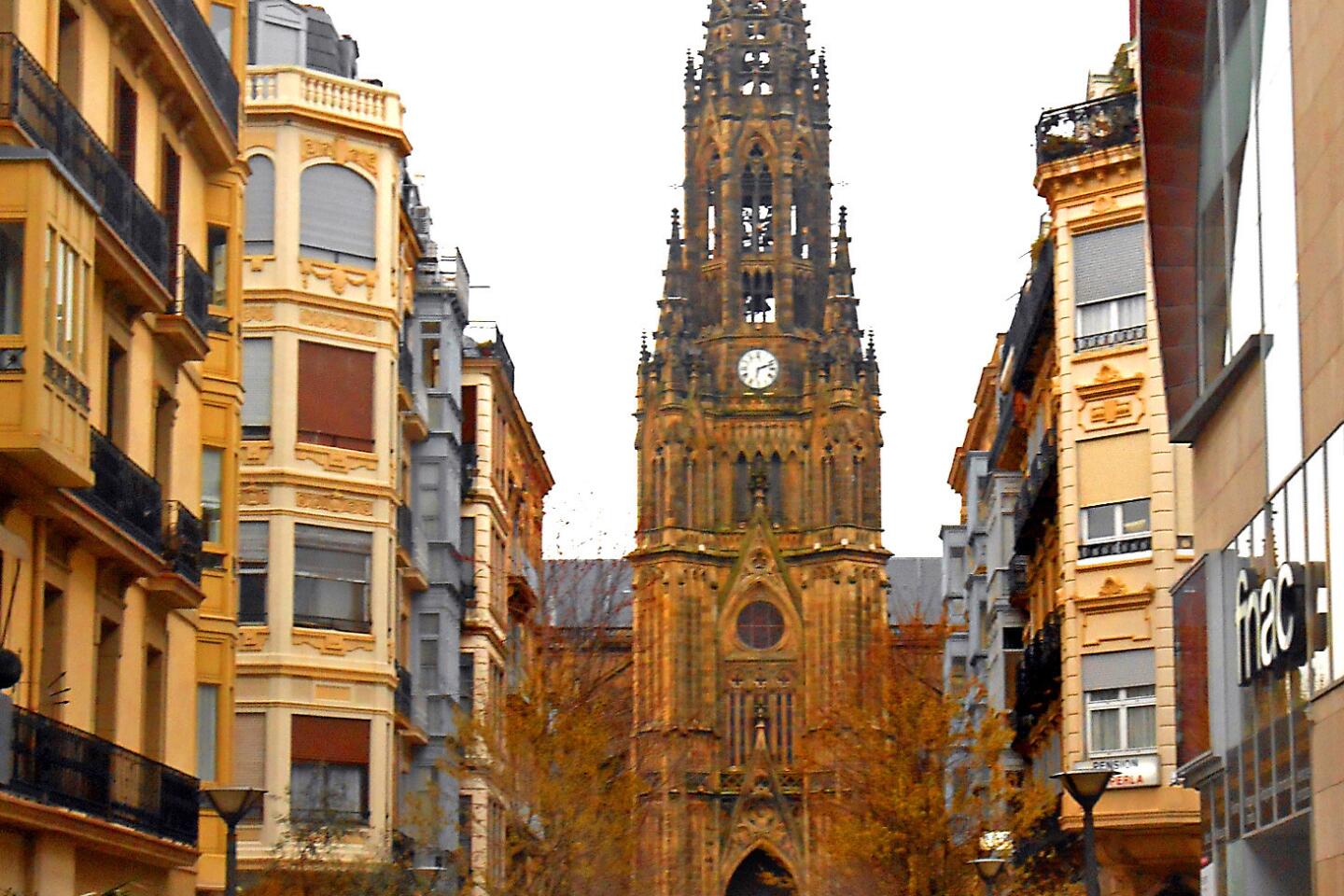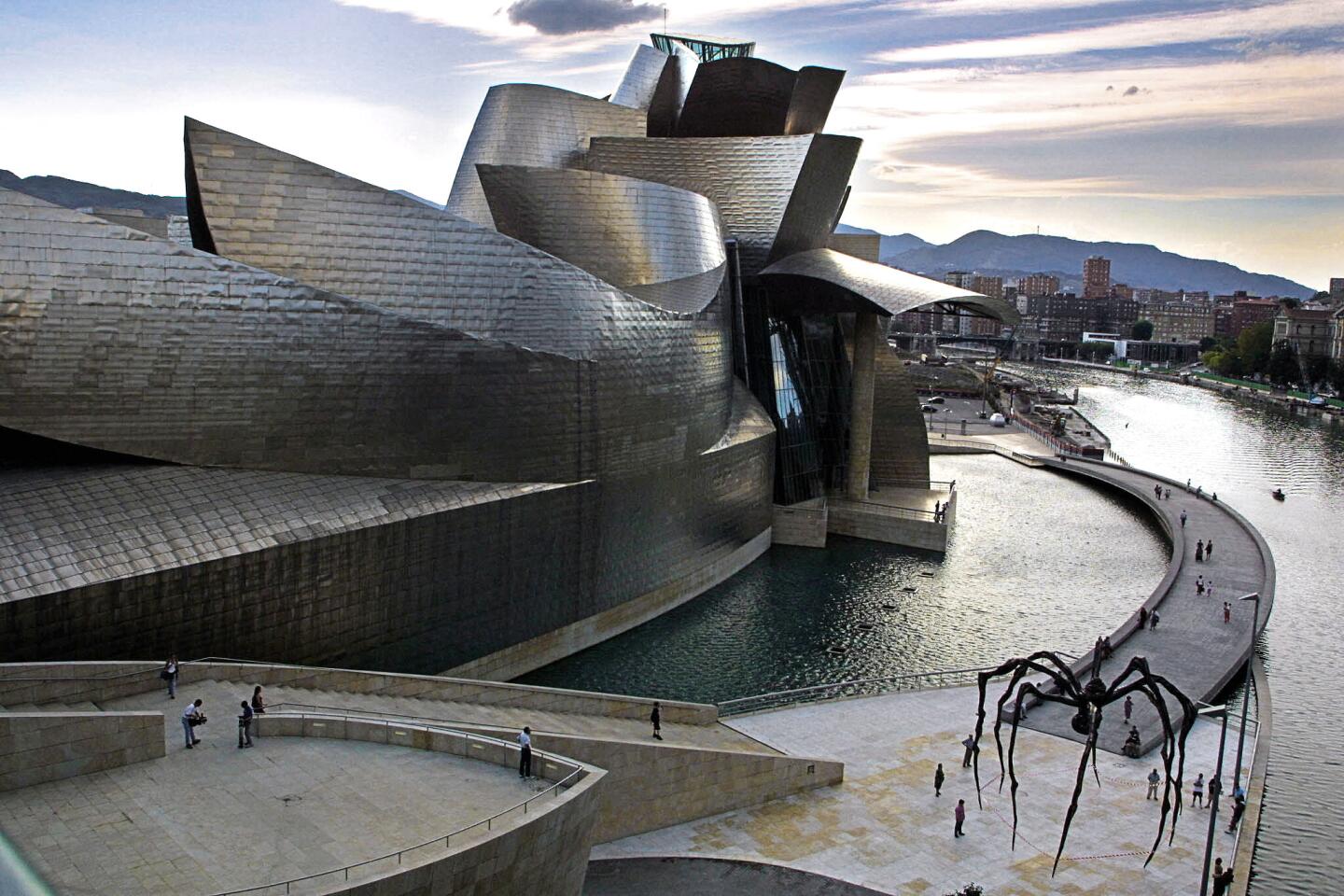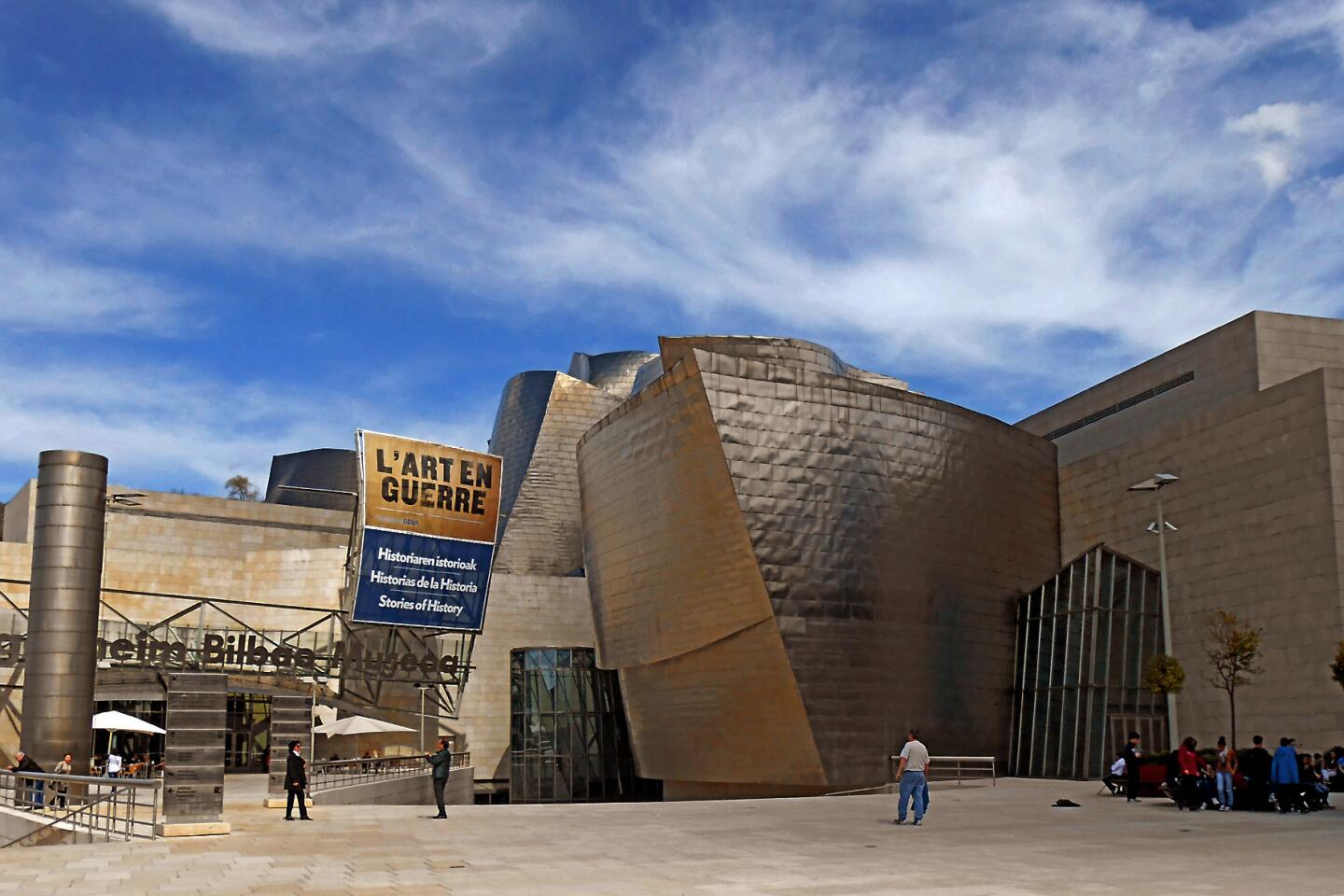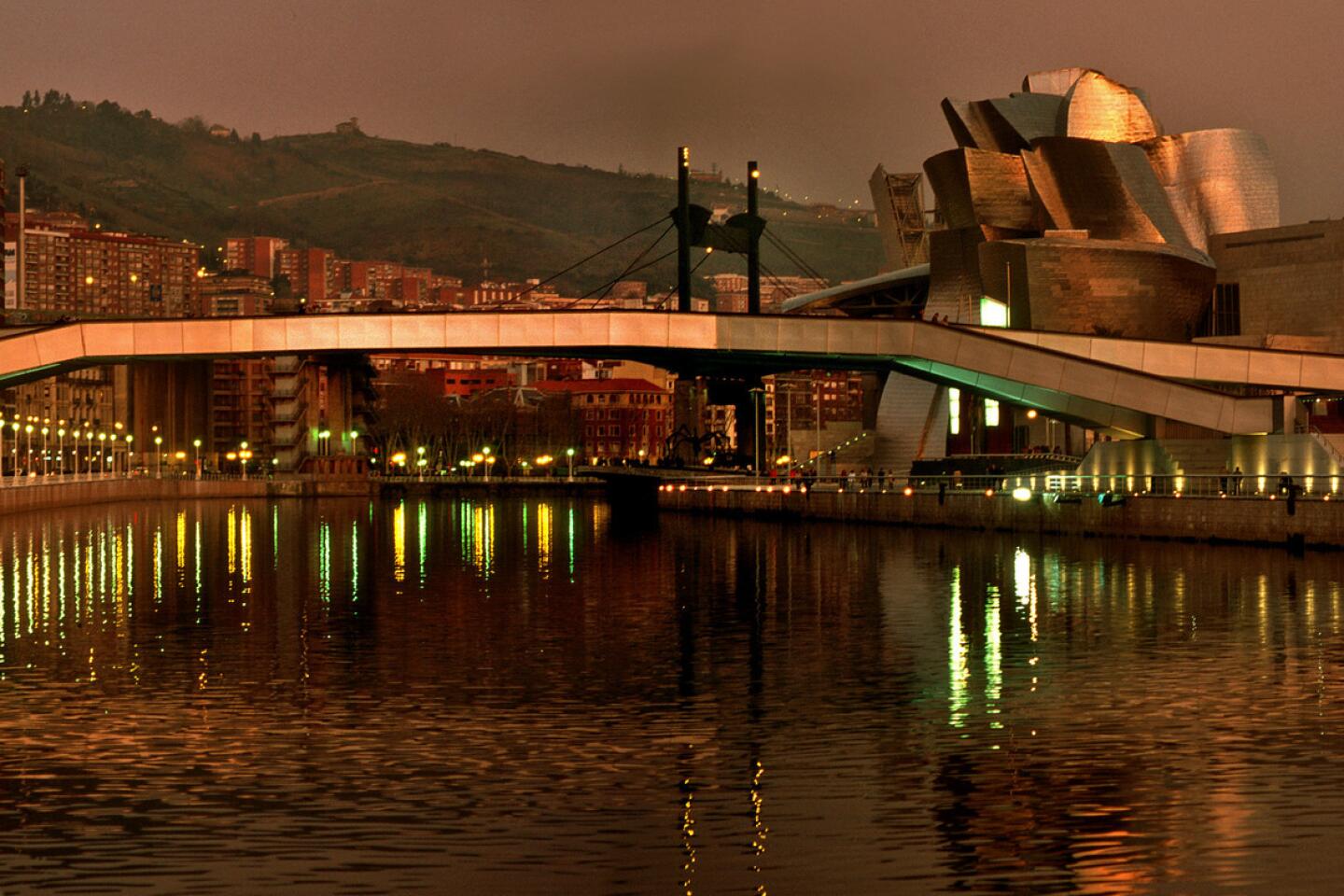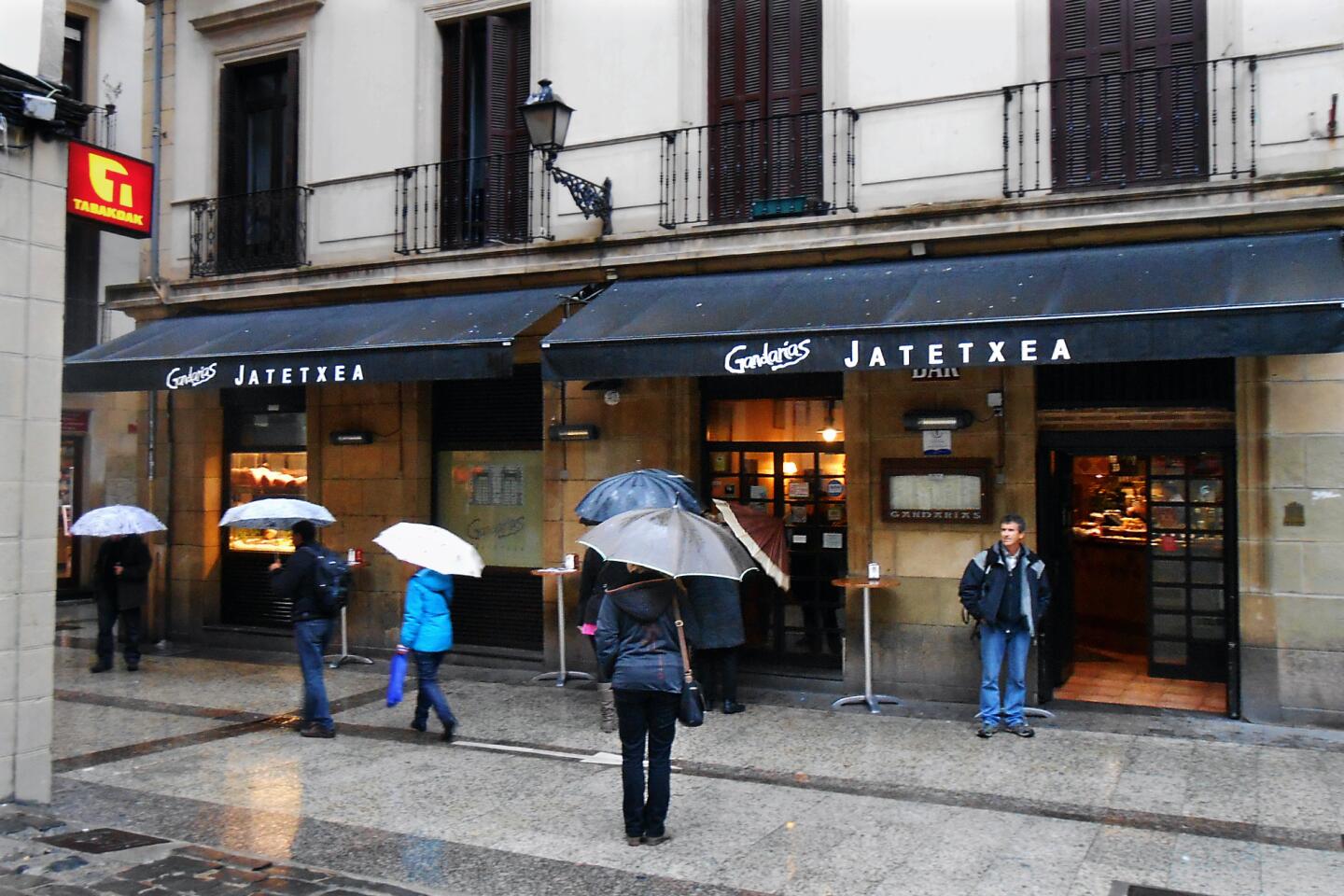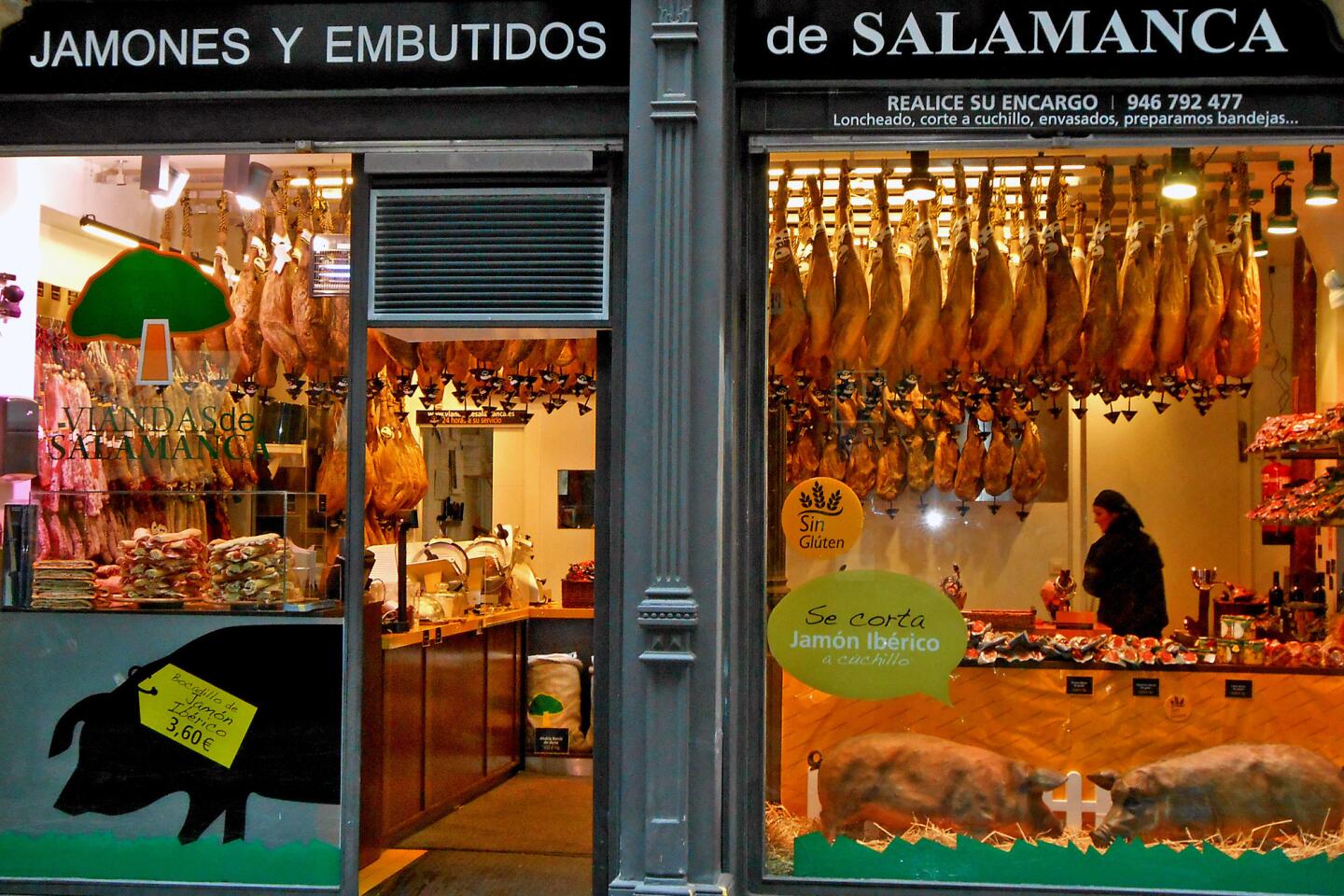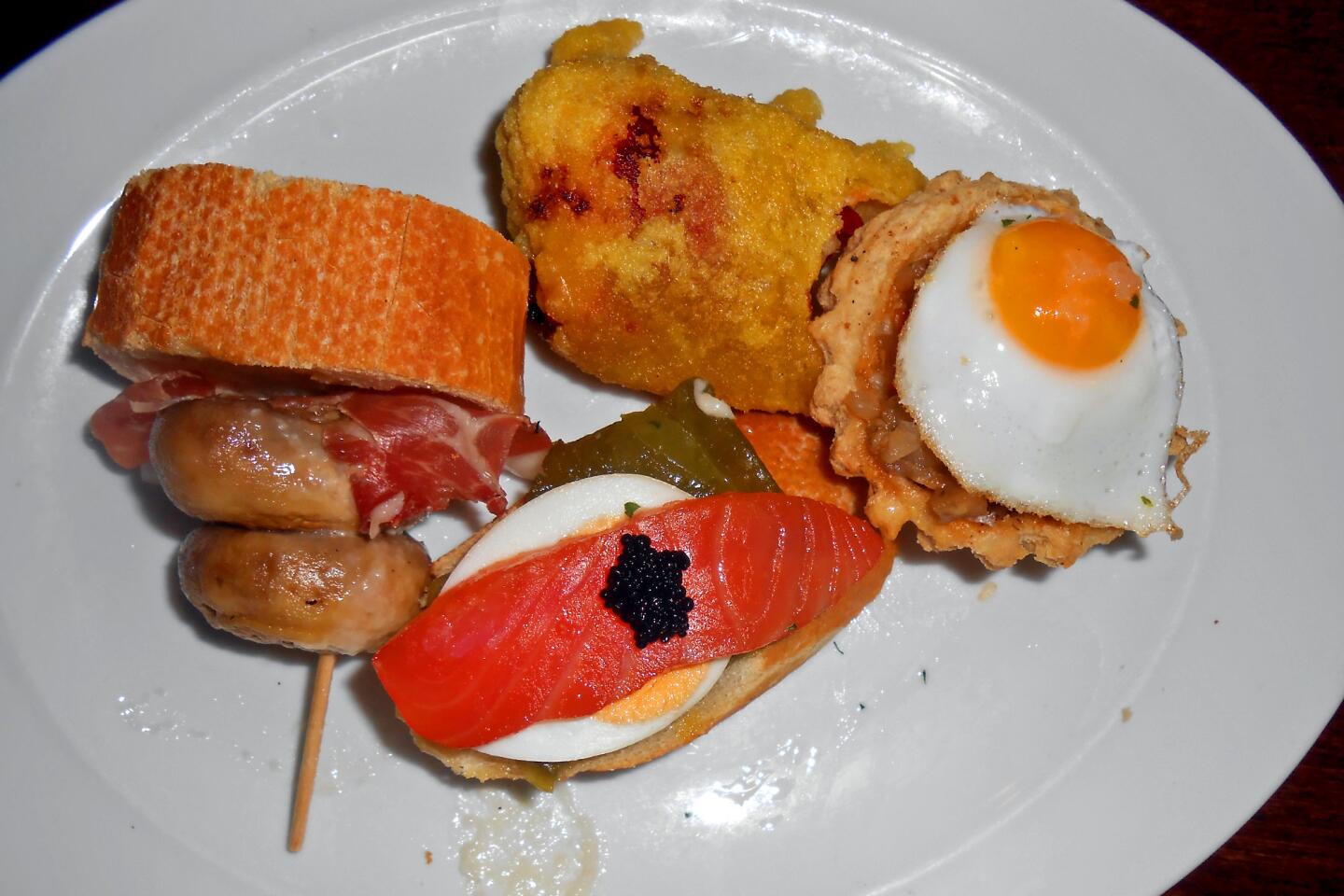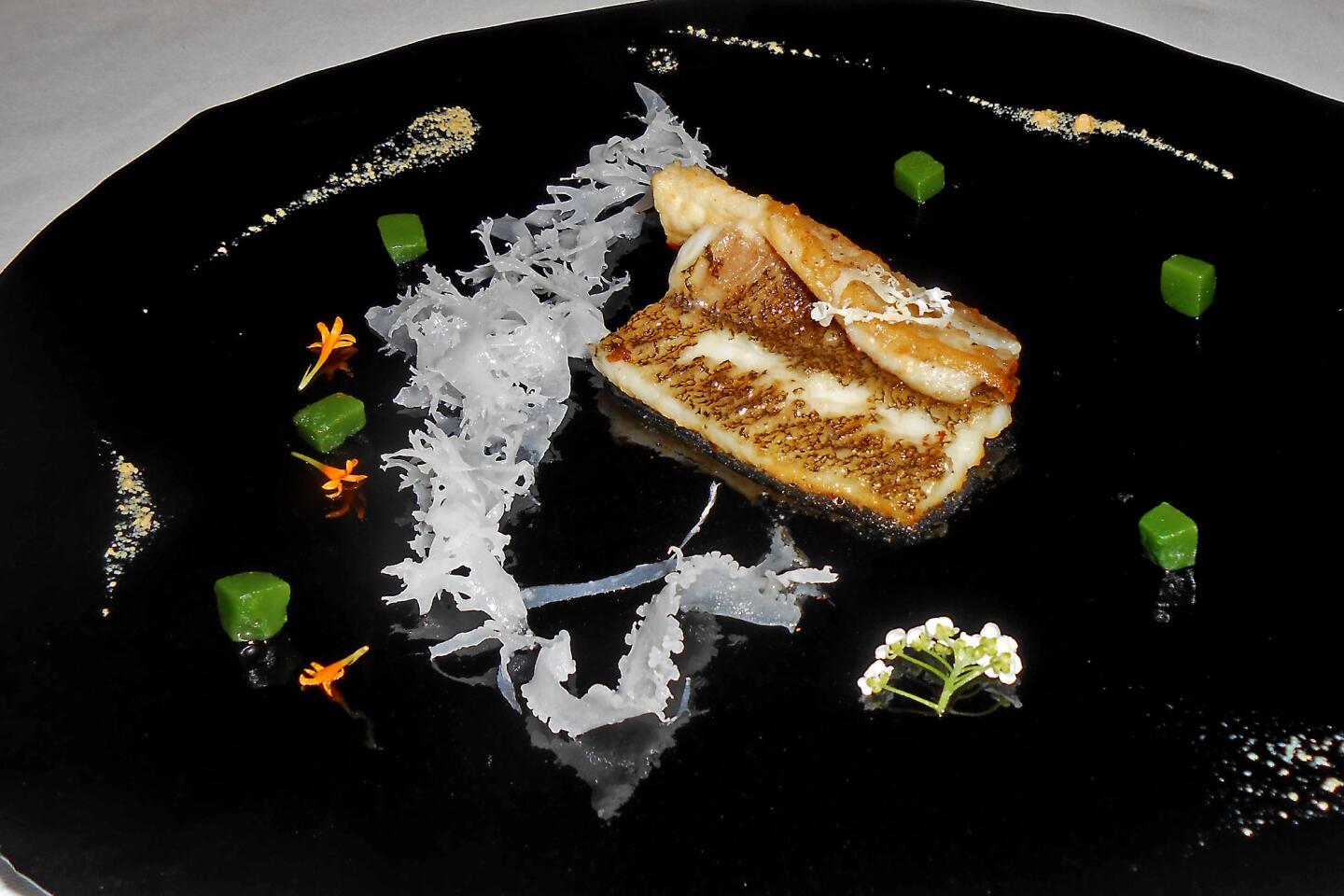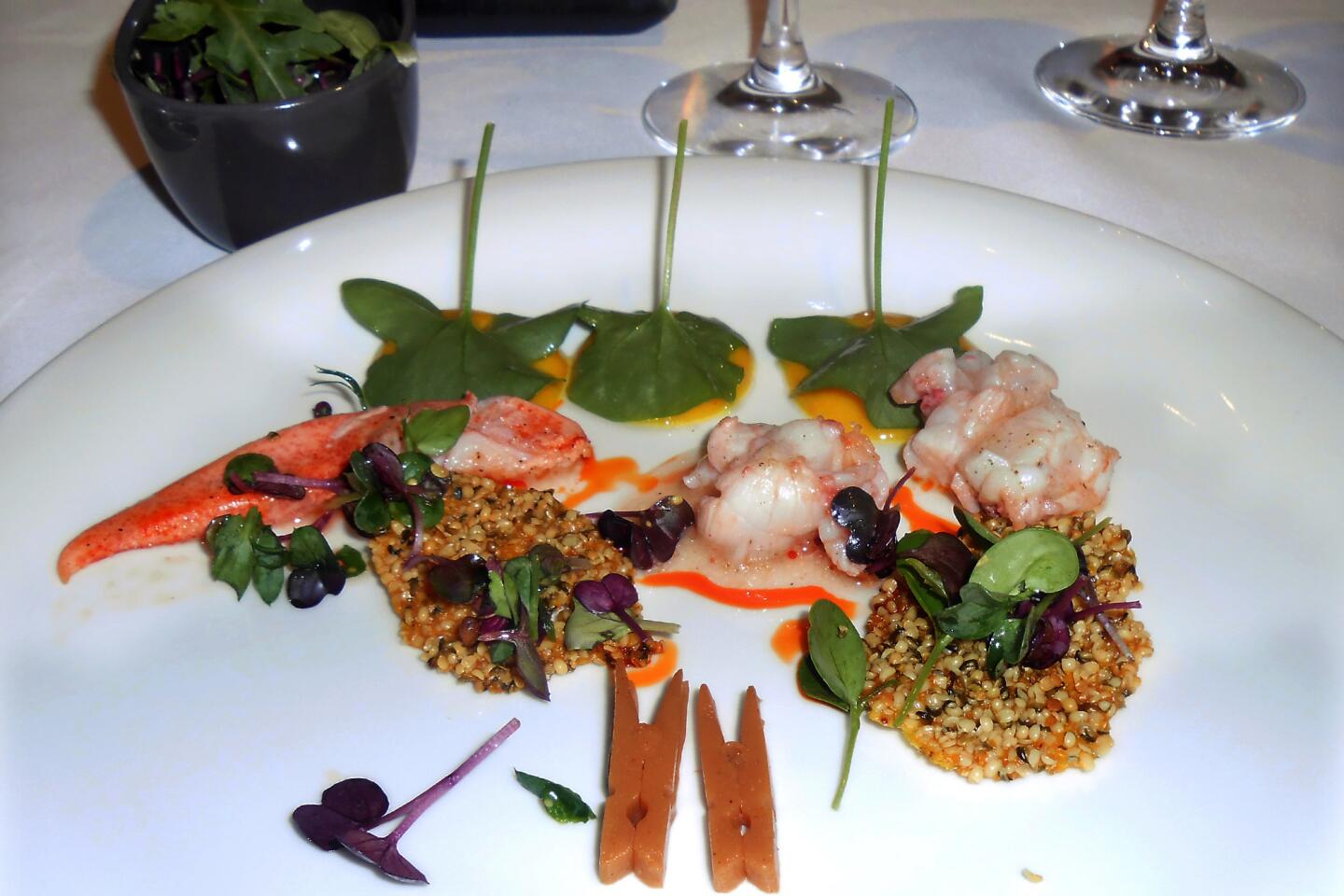A feast awaits in Spainâs Basque country
SAN SEBASTIAN, Spain â Some cultures take their food more seriously than others, but the Spanish may be leaders of the pack. Travelers have been coming here for the last 25 years to experience not only the growing sophistication of regional cuisine but also the miracle of molecular gastronomy.
When my daughter, Madeline, announced that she wanted to spend a college semester in Madrid, I needed no more excuse to research a trip to northern Spainâs Basque country, where even fare at local bars is haute and Michelin-starred restaurants inspire gushing coverage among global media.
As we shuttled between Bilbao and San Sebastian, my husband, Steve, our daughter and I attempted to deny our American instincts â speedy, efficient consumption of sugar, salt and fat â and immerse ourselves in a culture in which cooking and eating fall somewhere on the spectrum between art and sport.
We snacked at a museum cafe, consumed a 13-course meal over the course of four hours, gorged on sweets from a chocolate shop and marveled at the elegance of a hamburger as interpreted in a tiny bar. Each techno-infused starter, each multifaceted entree, each whimsical dessert was thoughtfully prepared and presented. After a few days of feasting, our expectations of what restaurant fare could be â and should be â were inextricably altered.
What follows is a diary of sorts that chronicles our efforts to consume a lifetimeâs worth of calories in a matter of days.
After a train ride from Madrid to Bilbao, we bungled our way through city streets to reach the Guggenheim Museum. Outside, we greeted Jeffrey Koonsâ flower-bedecked âPuppyâ and âMaman,â Louise Bourgeoisâ enormous bronze spider, but we needed sustenance before we plunged inside.
Our expectations of the museum cafe were modest, but the pintxos â the Basque answer to tapas â were the first of many revelations on the trip. (Once we read that legendary chef Martin Berasategui had consulted on the food at the Guggenheim, it all made sense.) We took our gazpacho, chunks of potato omelet (tortilla EspaĂąola), cod balls and bread to the terrace and marveled at the brilliance of our selections.
Our impromptu picnic fueled a two-hour exploration of the museumâs permanent collection. We wanted to linger, but we had a date in the nearby seaside resort city of San Sebastian.
The drive from Bilbao took about 80 minutes on easy stretches of well-maintained highways, and we arrived at the Hotel Londres with a couple of hours to prepare for the big event. Our large-by-European-standards room, with a king-size bed and a couple of armchairs, allowed for some quiet contemplation of what awaited us at 8:30 p.m.
We had reserved a table at Arzak, a temple of high-tech cuisine, where common (and some not-so-common) ingredients are assembled in highly unusual ways. One dessert, called Golden Footprint and Ladybird, included caramelized fruits served with black sesame bread (the âfootprintâ) and included a âlicorice ladybird (or ladybug) filled with yogurt and olive oil crystal.â
Los Angeles Times restaurant critic Jonathan Gold had recommended Arzak, a restaurant graced with three Michelin stars, emphasizing the influence and import of this 116-year-old institution and its pioneering chefs, Juan Mari Arzak and his daughter Elena. But the novices were not prepared for the experience that was to come.
We were seated in a small dining room that provided our first glimpse of Arzak craftsmanship: The decor, in shades of gray and mauve, was soothing; the wall panels with embedded eating utensils, inspired; the lighting behind opaque panels, optimal.
We studied the menu, slightly overwhelmed and unable to commit. Then Steve said, âLetâs do the tasting menu.â
Extraordinary? Yes. But it was also a bit of an endurance contest, and for anyone considering entering the race, a few words of advice from one of the rubes: Pace yourself.
Dinner included kabrarroka pudding with kataifi (a fish terrine of sorts wrapped with a phyllo-like pastry that looks like shredded wheat); crispy manioc (cassava) hydrated with huitlacoche (corn fungus) and stuffed with a preparation of onion, green tea and foie gras; and poached lobster served with edible âclothespinsâ made from lobster stock and gelatin.
At different points in the evening, Juan Mari and Elena greeted customers and asked where they were from. When we said, âLos Angeles,â Juan Mari then smiled and mentioned a recent visit to L.A. âLakers,â he said, nodding sagely. âPau.â
The dinner continued: white sole, lamb with fried grapes and longan, Kobeâs Beer (a meat lollipop, served with a licorice bark bone). I was crawling to the finish line, managing to taste only a bite of each of the final courses. Restaurant personnel appeared at my side to ask whether something was wrong. Did I require something else? (Only an ability to increase the size of my stomach.)
During the dessert course (I chose Playing Marbles With Chocolate â liquid-filled chocolate balls served with amaranth and oregano sauce), we noticed that it was midnight and that the other patrons had departed. At 12:30 a.m., after we signed a credit card slip that was about a third of our monthly mortgage, we started to make our way outside. Juan Mari and Elena hugged us, listening to Steveâs story of lost luggage and counseling him on his next moves.
Steve was smiling as we climbed into a cab. âI think they liked talking to us,â he said. Perhaps. My guess is that they were smiling at the anticipation of our departure.
The next morning, we passed on a formal breakfast and dined on coffee and crackers. We vowed to spend the day fasting or eating raw vegetables, yogurt and hummus.
We broke our vows at lunchtime.
The three of us walked into the Gandarias restaurant in the heart of San Sebastianâs old city. We signaled our outsider status in many ways, but primarily because we entered at 12:30 p.m., an hour or two before locals eat.
But we were ravenous, so we asked the barman for plates and loaded up on pintxos: lamb brochettes, slices of tortilla, Iberian ham on baguettes with skewers of mushrooms, fried prawns, spider crab pie, wild mushroom croquettes, olives, goat cheese with bacon.
Just as we were preparing to leave, the restaurant began to fill with happy â no, make that boisterous â patrons. They were communing with friends, drinking, smoking, and probably paying, like us, about $15 to $20 apiece
Madeline and I walked Steve back to the hotel and then returned to the streets to explore a handful of pastry and chocolate shops. Eventually, we settled on Oiartzun, which showcased rack after rack of confections such as lemon and fruit tarts, chocolate truffles, sponge cake and eclairs. We assured ourselves that our purchases were not for immediate consumption, but for emergency hunger pangs.
There was some truth to that, although the lemon tart didnât last long.
About 8 p.m., we began the hunt for food again. The Arzak reservation had been made weeks in advance, but on this night we wanted to walk until we encountered some minimalist fare. We couldnât plow our way through another tasting menu. At least, thatâs what we told ourselves until we encountered A Fuego Negro.
Itâs a small space, with exposed pipes, a few tables and room for a clutch of customers at the bar. If Arzak is elegance, Fuego Negro is funk. The walls are covered with posters celebrating African American culture and graphics that announce: âA Fuego Negro: Klassics Never Dieâ and âBlack Brooklyn Basques.â
The mood was upbeat, largely because of a table of rowdy Irishmen and our pixie-like waitress, who encouraged us to go big or go home. (That was our interpretation.) So we agreed to a menu-less tasting menu, pledging our faith in the potential of surprise.
Among our courses: âchestnutsâ made from pureed turnips and celery, pickled pork with tomato mole ice cream, octopus salad with spinach, black and white quinoa on a bed of greens, a burger with a ketchup-infused bun and plantain chips, and long, slender âpeppersâ made of white chocolate.
Spectacular.
The next morning, we drove back to Bilbao and wandered the Casco Viejo, or Old Quarter, a part of the city that is not jammed with out-of-towners. We had an opportunity to inspect St. James Cathedral, whose origins date to the 14th century, and the Basque Museum, and to observe the clutches of old men in berets and a series of ETA flags â symbols of the Basque separatist movement â draped on balconies.
At 2:30 p.m., we surrendered to hunger and stepped into the nearest restaurant: Hatari Urban Kitchen & Bar. The pinxtos were fine, but Steve ordered a hamburguesa de Dijon that stopped us in our tracks, a tower of food with greens and cooked peppers, fried goat cheese, duck ham, a patty of ground meat and a slab of bread used as a base, a final reminder of how artistry can elevate the commonplace.
More to Read
Sign up for The Wild
Weâll help you find the best places to hike, bike and run, as well as the perfect silent spots for meditation and yoga.
You may occasionally receive promotional content from the Los Angeles Times.
